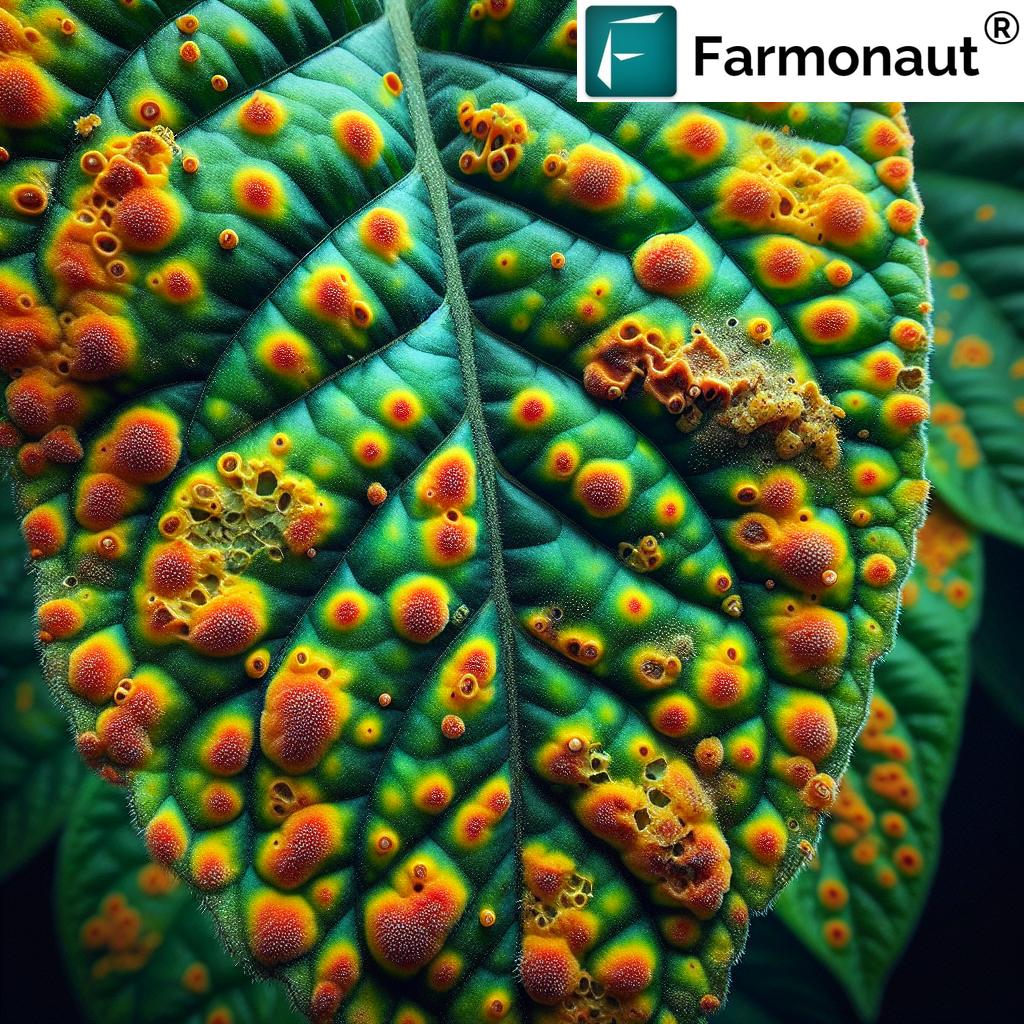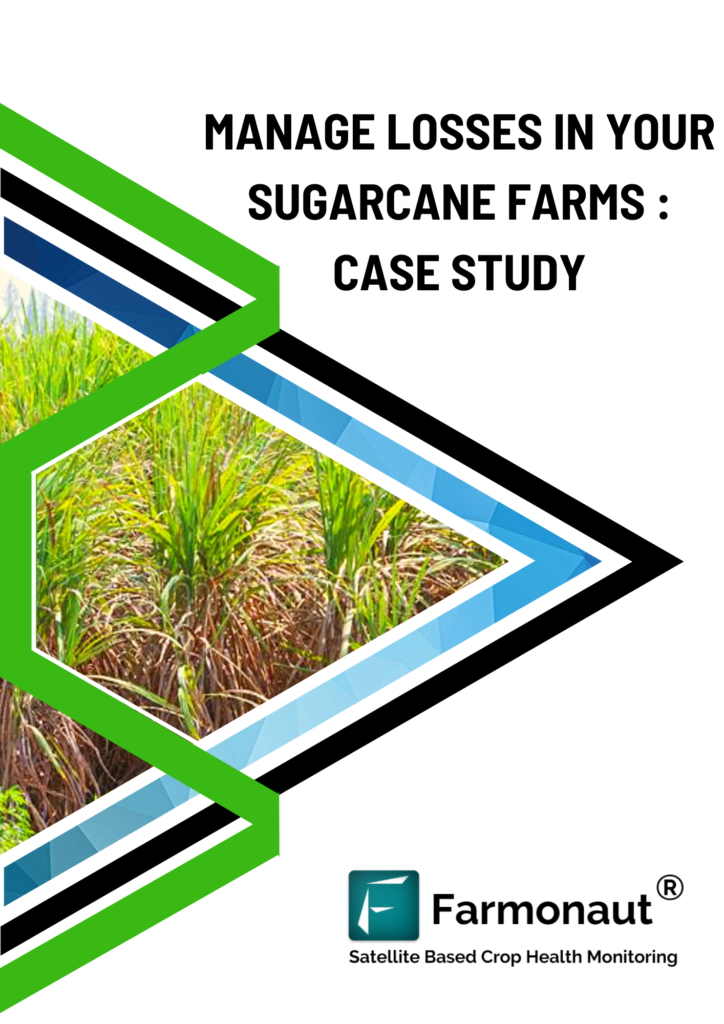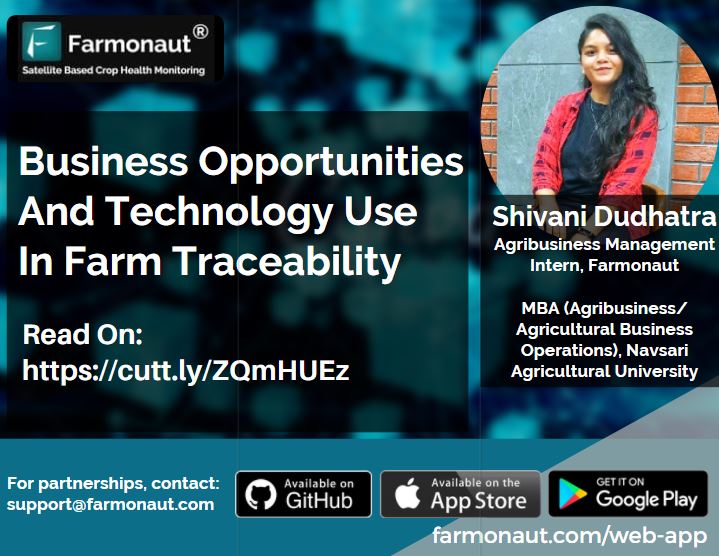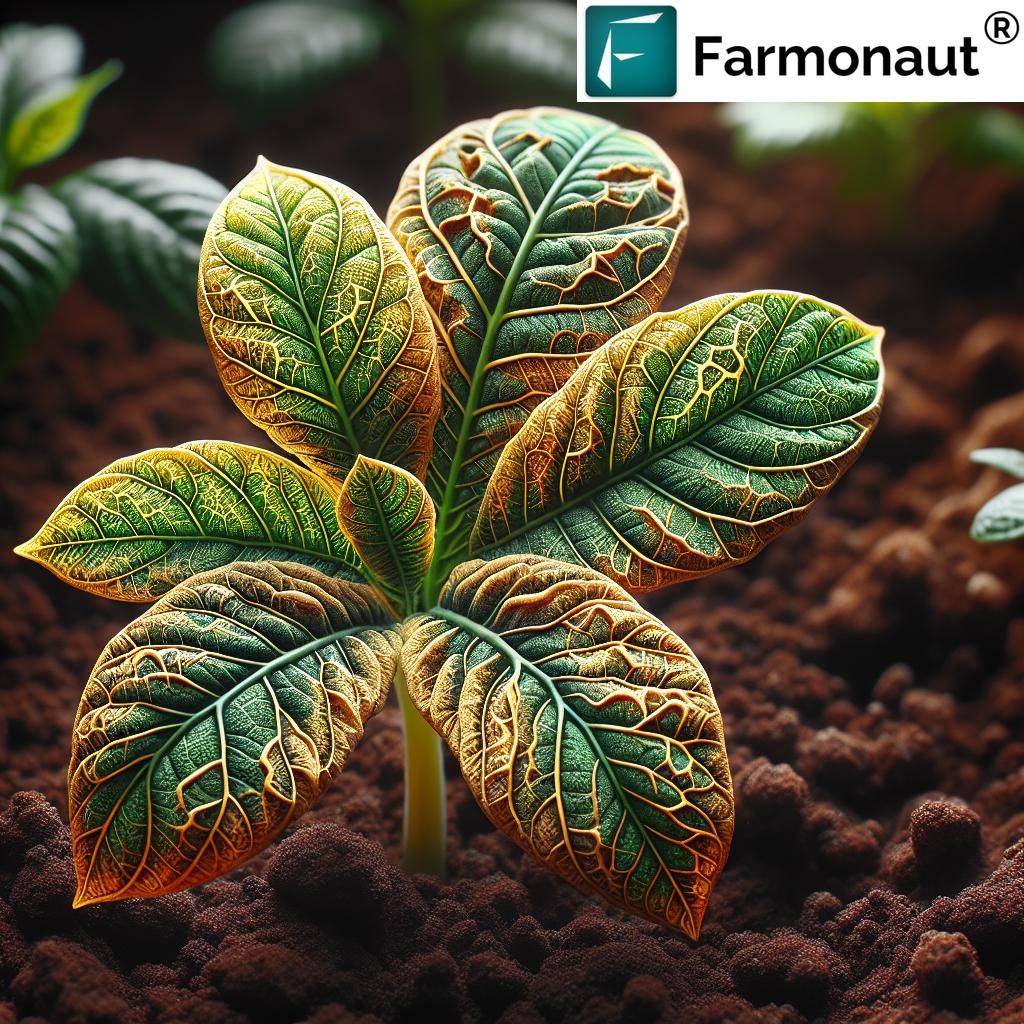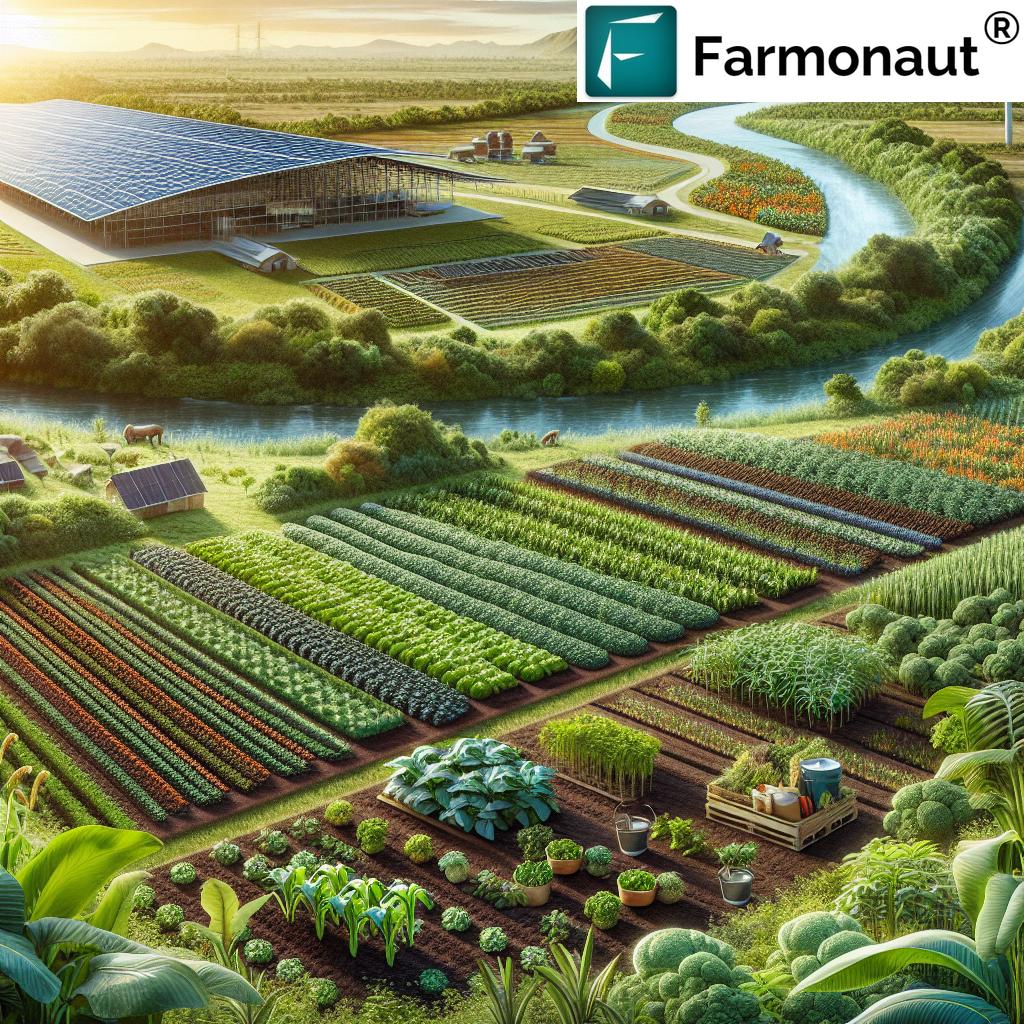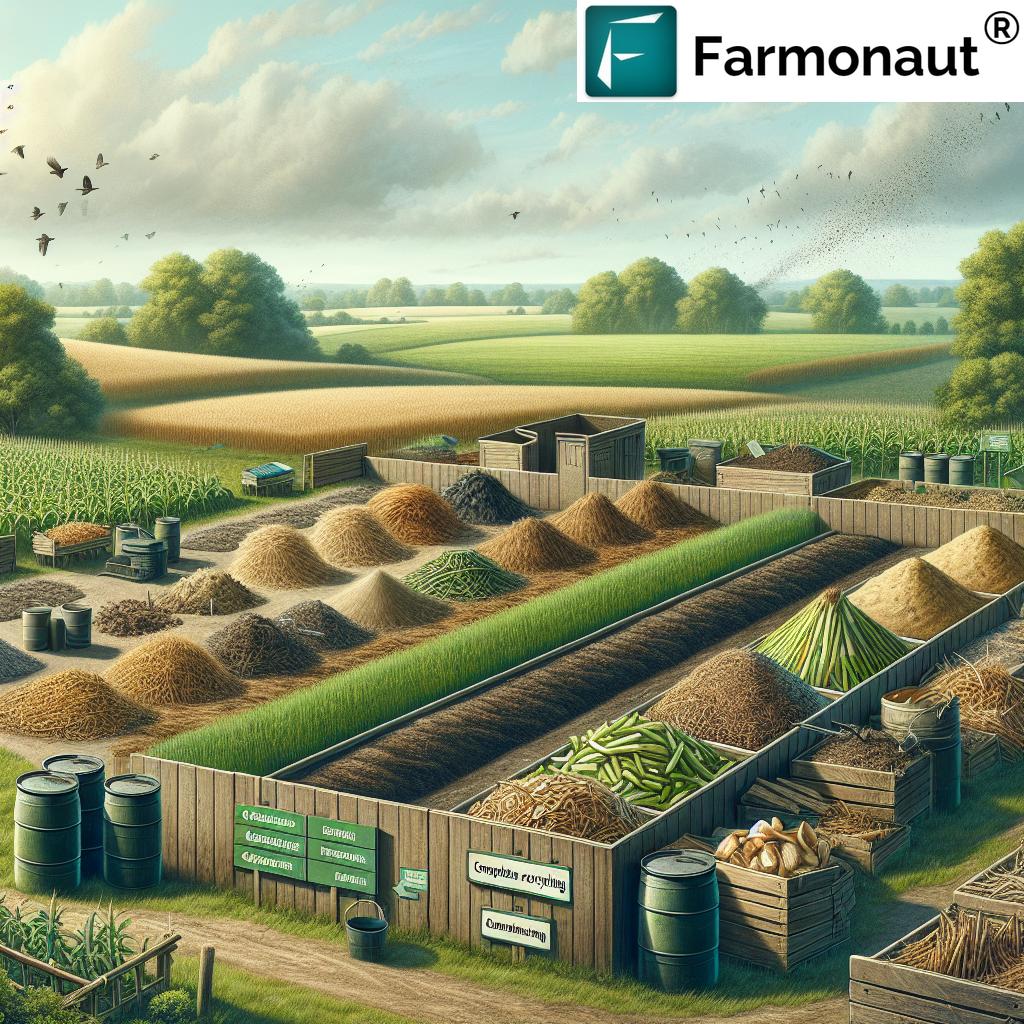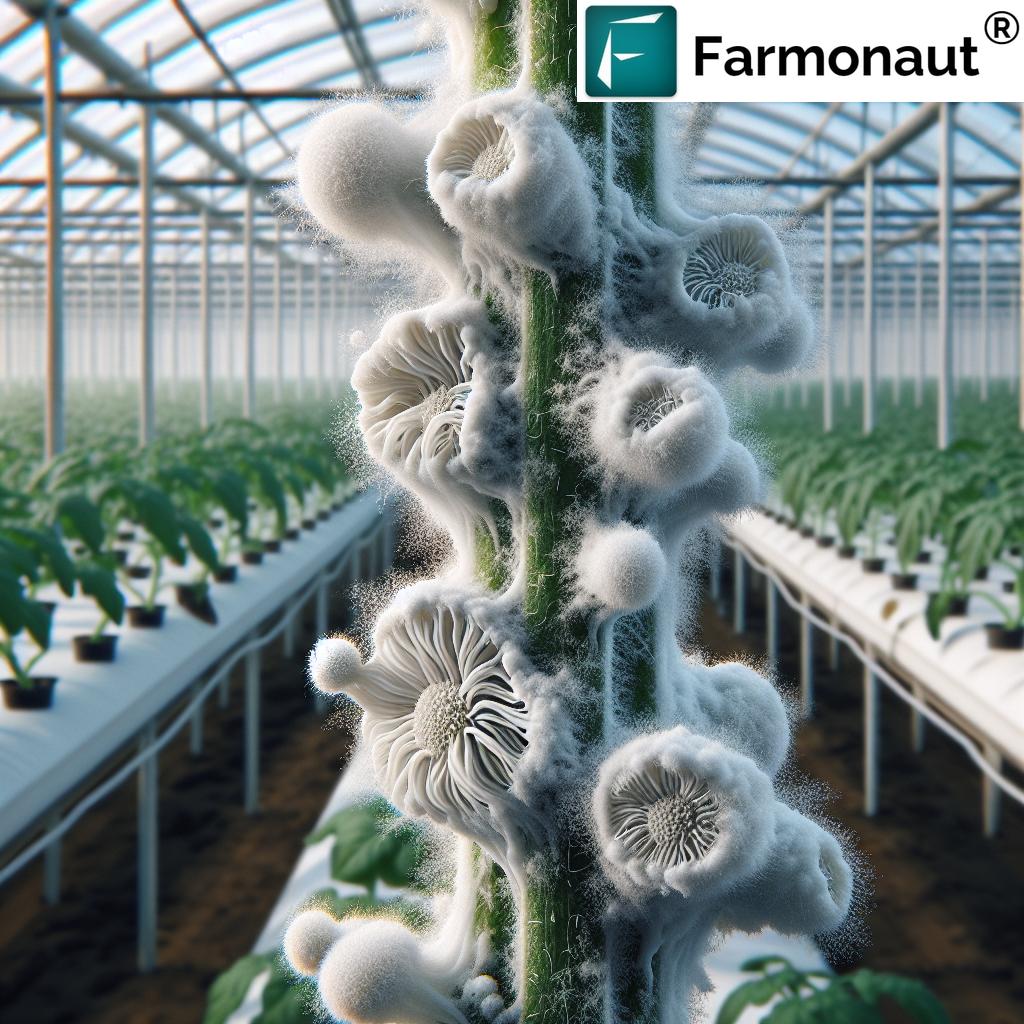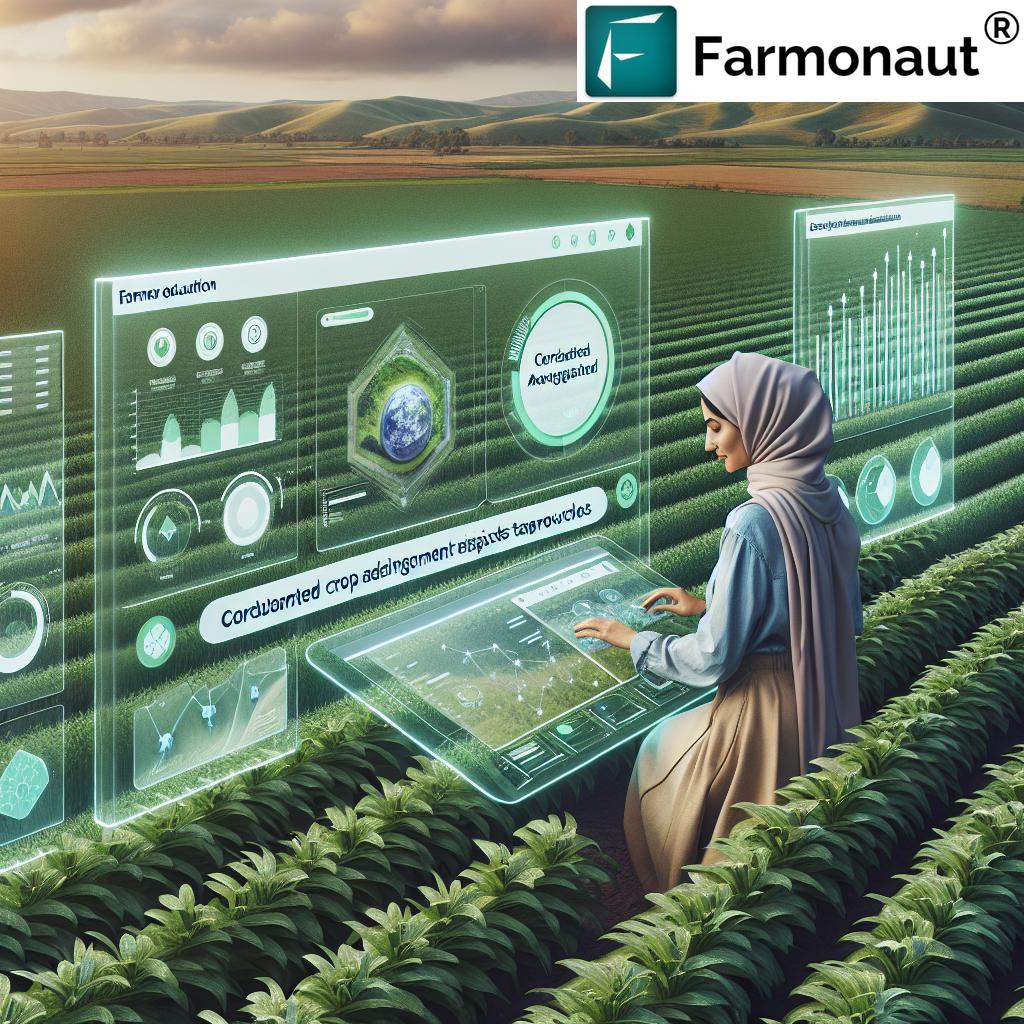Pest Control Plantation: 7 Secret Hacks for Huge Yields
Table of Contents
- Understanding Integrated Pest Management (IPM)
- Why Pest Control in Plantations is Essential for Huge Yields
- 7 Secret Hacks to Boost Pest Control and Yields in Plantations
- Key Components of IPM: Sustainable Pest Control Strategies
- Crop Health Monitoring: Satellite-Based Pest Detection With Farmonaut
- Biological Pest Control: Sustainable & Natural Methods
- Cultural Pest Control Practices: Enhancing Plantation Resilience
- Judicious Use of Chemical Controls: Minimizing Environmental Impact
- Mechanical & Physical Controls: Non-Chemical Pest Barriers
- What is the Effect of Pesticides on Environment?
- Comparative Effectiveness Table: Sustainable Pest Control Methods
- Farmonaut Solutions for Sustainable Pest Management
- Conclusion: Your Path to Healthy, High-Yield Plantations
- FAQ: Pest Control in Plantations & IPM
In modern agricultural plantations, effective pest control is not just about reducing losses—it’s central to maximizing productivity, protecting the environment, and ensuring sustainability for future generations. Today, we face mounting challenges: increased pesticide resistance, strict environmental regulations, and the need to feed a growing global population while minimizing ecological damage. Our mission as growers and agribusinesses is to find smarter, more sustainable ways to manage pest populations in our crops and forestry plantations, achieving huge yields with a minimal footprint.
This comprehensive guide unveils the seven secret hacks for huge yields through sustainable pest control in plantations. We’ll explore the science and practice of integrated pest management (IPM), biological controls, advanced crop health monitoring using technologies from Farmonaut, and much more—arming you with actionable insights for plantation success.
Understanding Integrated Pest Management (IPM)
Integrated pest management—commonly referred to as IPM—is a comprehensive approach for pest control in plantations that combines various strategies to effectively, economically, and sustainably manage pest populations in crops and forestry. Rather than relying solely on chemical pesticides, IPM emphasizes multiple methods such as biological, cultural, mechanical, and physical controls to foster plantation health.
The objective of IPM is clear: minimize the use of hazardous chemicals, optimize yield, protect beneficial organisms, and safeguard the environment. To accomplish this, IPM is built on several key components—from pest identification and monitoring to action thresholds and judicious chemical use. Let’s dive deeper into why this approach matters for today’s agricultural success.
Why Pest Control in Plantations is Essential for Huge Yields
Plantations, whether crops (like oil palm, cotton, or cereals) or forestry, are prone to a range of pest threats: from insects and rodents to pathogens and weeds. These pests can rapidly increase in population if left unchecked, causing catastrophic damage and slashing yields.
- Losses from unchecked pests can reach up to 40% in some crops globally.
- Poor pest management leads to overuse of pesticides, resulting in soil and water pollution and damage to non-target species.
- Sustainable pest control is crucial for maintaining economic viability and environmental integrity in modern plantations.
Adopting IPM strategies for agriculture allows us to mitigate these challenges effectively—improving yields, reducing costs, and supporting ecosystem health.
7 Secret Hacks to Boost Pest Control and Yields in Plantations
Ready to outsmart pests and achieve huge yields? Here are our seven proven hacks based on the latest IPM, biological, and technological advances:
- Implement Real-Time Crop Health Monitoring – Leverage satellite-based systems for early detection and targeted interventions (see Crop Health Monitoring).
- Utilize Biological Pest Control – Foster natural predators, and encourage microbial agents to sustainably reduce pest populations in crops (details here).
- Adopt Cultural Pest Control Practices – Modify farming techniques: rotate crops, choose resistant plant varieties, and maintain field sanitation (explore now).
- Apply Physical and Mechanical Controls – Use traps, nets, or mechanical disruption to break pest life cycles—strategies with minimal environmental impact.
- Set Action Thresholds – Monitor pest populations and act only when necessary, avoiding unnecessary pesticide applications.
- Use Chemical Controls Judiciously – As a last resort and selectively, choose products least harmful to beneficial insects and the environment (see more).
- Adopt Integrated Pest Management Systems – Combine multiple strategies—monitoring, prevention, intervention—for resilience and high productivity.
Our approach prioritizes these steps based on both the specific pest species and the unique context of each plantation. We’ll now break down these hacks in more detail.
Key Components of IPM: Sustainable Pest Control Strategies
IPM in plantations revolves around a set of well-defined, interlinked components. Let’s unpack each one:
1. Pest Monitoring and Identification
To control pests effectively, we need to regularly inspect our fields/plants and accurately identify pest species present. Advanced crop health monitoring systems, including satellite imagery (detailed further below), allow us to:
- Detect early signs of infestations (often invisible to the naked eye)
- Assess population levels and track pest movement across the plantation
- Decide on targeted interventions before economic thresholds are breached
2. Establishing Action Thresholds
Not every pest sighting warrants immediate action. IPM strategies for agriculture advocate for:
- Determining pest population levels that, if exceeded, would cause unacceptable damage
- Making informed decisions—implement controls only when necessary
- Reducing unjustified pesticide usage, thereby minimizing environmental impact
3. Preventive Measures
Proactive measures like:
- Crop rotation to disrupt pest life cycles
- Selecting resistant plant varieties tailored to local threats
- Enforcing proper sanitation—removing plant debris, weeds, and alternate pest habitats around plantations
4. Utilization of Biological Controls
Biological pest control harnesses natural enemies—like predators, parasites, and pathogens—to keep pest populations in check. Real-world examples in oil palm plantations and other large-scale agriculture include the use of barn owls against rodents or introducing ladybugs to manage aphid outbreaks (explained in detail below).
5. Physical and Mechanical Controls
Simple yet powerful, these methods involve:
- Employing physical barriers (nets, row covers, sticky traps) to exclude pests
- Using mechanical tools like tillers to disrupt pest soil life stages
- Manually removing eggs, larvae, or adults where practical
When integrated with other IPM tactics, these non-chemical controls significantly reduce reliance on synthetic pesticides.
6. Chemical Controls (Judicious Use)
Chemicals serve as a last resort in IPM:
- Applied only after all other measures prove insufficient
- Selected for minimal impact on non-target organisms and the environment
- Rotated to slow the development of pesticide resistance in pest populations
Crop Health Monitoring: Satellite-Based Pest Detection With Farmonaut
Early detection is the linchpin of successful pest control in plantations. Traditional manual scouting—while valuable—is labor-intensive and prone to missing small but critical signs of stress. Enter satellite-based systems and remote crop health monitoring, which have revolutionized how we:
- Detect pest infestations long before visible damage appears
- Pinpoint affected plantation zones for targeted interventions
- Optimize chemical and biological applications—saving resources, reducing environmental impact, and protecting yields
How Farmonaut Empowers Precision Pest Management
Farmonaut is a pioneering agricultural technology company offering real-time, satellite-based crop health monitoring. Through its Android, iOS, and web app platforms, as well as API access (see API info | developer docs), Farmonaut delivers:
- Accurate vegetation health indices (NDVI) to identify stress
- Soil moisture level analysis for advanced risk forecasting
- Early warning alerts for pest infestations using multispectral imagery
- AI-driven recommendations for interventions through the Jeevn AI advisory system
This enables us to act swiftly against pest outbreaks, treat only affected blocks, and dramatically reduce pesticide usage.
By combining satellite-based pest detection with our on-ground knowledge, we gain a 360° view of plantation health—making all subsequent pest control strategies significantly more precise and effective.
-
Carbon Footprinting with Farmonaut
Track and minimize your plantation’s environmental impact through real-time carbon emissions data. -
Product Traceability Solution
Secure blockchain-based crop traceability for authentic, transparent supply chains—from farm to consumer. -
Fleet Management
Efficiently track agricultural machinery and assets across your plantations, controlling costs and ensuring operational safety. -
Crop Loan and Insurance Verification
Simplify satellite-based verification for agricultural loans and insurance, reducing fraud, and expanding financing access. -
Large-Scale Farm Management Tools
Manage plantation health, fleet, and compliance efficiently through scalable, modular digital solutions.
Need all-in-one advisory? Explore our Crop, Plantation, and Forest Advisory—designed to make smart, data-driven pest management accessible for all.
Biological Pest Control: Sustainable & Natural Methods
Biological pest control represents the gold standard for sustainable pest management in agriculture and plantations. Rather than relying solely on synthetic chemicals, biological control methods use living organisms to reduce pest populations in crops through predation, parasitism, or disease.
Key Techniques & Examples
- Introducing Predators: Release of ladybugs to manage aphid populations in plantations, or use of Syanacus sp. against caterpillars in oil palm regions.
- Parasitic Wasps and Pathogens: Releasing wasps that target specific pest eggs/larvae or employing bacterial/fungal agents.
- Encouraging Natural Bird Predators: Building nest boxes for barn owls (Tyto alba) to naturally control rat infestations in oil palm and cereal plantations.
- Habitat Enhancement: Planting flowering species (like Turnera subulata) around the field attracts adults that act as decoys—reducing damaging pest activity in the crop itself.
These strategies promote plantation resilience, reduce the impact of chemicals on the environment, and foster a healthy, balanced ecosystem where beneficial species can thrive.
Cultural Pest Control Practices: Enhancing Plantation Resilience
Cultural controls focus on modifying the field environment and cultural practices to prevent and reduce pest population build-up. These techniques, rooted in local knowledge and modern agronomy, are cornerstones of sustainable pest management:
- Crop rotation: Switch planting cycles to disrupt pest life cycles and reduce their prevalence.
- Soil management: Adjusting pH and fertility discourages certain pest and disease species, while promoting crop vigor.
- Improved irrigation: Avoiding waterlogged conditions, which often foster pest breeding and pathogen propagation.
- Sanitation: Remove crop residues, weeds, and alternate hosts from around the plantation to deprive pests of breeding sites.
- Selection of resistant plant varieties: Whenever possible, choose robust cultivars suited for local pest threats and climate.
- Use of beneficial animals: Such as incorporating ducks in rice fields to reduce snail and insect pest populations.
- Adjusting planting dates and spatial arrangement: Planting crops at times or in patterns that avoid peak pest activity periods.
Collectively, these efforts strengthen the resilience of the whole farming system and serve as effective preventive measures in our IPM program.
Judicious Use of Chemical Controls: Minimizing Environmental Impact
Chemical pesticides remain a crucial tool in our arsenal—but only when used strategically and judiciously in concert with other IPM measures. Overreliance on chemicals often leads to:
- Resistance build-up in pest species, rendering products less effective
- Negative impacts on pollinators, beneficial insects, and soil microfauna
- Environmental contamination—water, soil, and even air pollution
To use chemical controls responsibly:
- Target sprays only when action thresholds demand intervention
- Choose selective, modern products with the least impact on non-target organisms
- Rotate active ingredients to delay resistance
- Follow recommended rates and pre-harvest intervals exactly
Our approach reserves chemicals for last-resort scenarios, with the overall goal to preserve both yield and long-term sustainability.
Mechanical & Physical Controls: Non-Chemical Pest Barriers
Physical and mechanical controls are traditional yet invaluable methods for managing pests, especially where chemical use is restricted or undesirable:
- Barriers and netting: Place over nursery beds, seedling trays, or valuable crops to exclude pest species.
- Sticky and pheromone traps: Attract and capture insect pests, supporting both control and monitoring population levels.
- Mechanical disruption: Use of tilling or manual weeding to destroy pest eggs, larvae, or overwintering adults in the soil.
- Removal of infested plant material: Prune and destroy affected plant parts to prevent the spread of infestations.
These IPM strategies reduce the build-up of resistant pest populations and are particularly valued in organic or environmentally sensitive plantations.
What is the Effect of Pesticides on Environment?
While chemical pesticides have undoubtedly helped boost agricultural yields worldwide, their environmental impact cannot be overlooked:
- 98% of sprayed insecticides and 95% of herbicides do not reach their target species—meaning nearly all enter the wider ecosystem.
- This off-target movement causes soil degradation, air and water pollution, and can harm essential non-target species (pollinators, birds, aquatic life).
- Disruption of ecosystem services, decline in natural predator populations, and emergence of pest resistance are increasing concerns.
For us as responsible farmers and managers, aligning with sustainable pest management and integrated pest management approaches is critical to minimize negative impact and ensure the long-term productivity of our plantations.
Comparative Effectiveness Table: Sustainable Pest Control Methods
| Method | Description | Estimated Yield Improvement (%) | Environmental Impact | Sustainability Rating |
|---|---|---|---|---|
| Chemical Control | Use of synthetic pesticides or herbicides for pest reduction | 15–30% | High | ⭐⭐ |
| Biological Control | Harnessing natural predators, parasites, or pathogens to suppress pests | 20–35% | Low | ⭐⭐⭐⭐⭐ |
| Mechanical/Physical Control | Physical removal, barriers, or soil disruption to reduce pest populations | 10–20% | Low–Medium | ⭐⭐⭐⭐ |
| Integrated Pest Management (IPM) | Combines monitoring, prevention, biological & chemical tools for sustainable management | 30–45% | Low | ⭐⭐⭐⭐⭐ |
| Cultural Control | Crop rotation, sanitation, resistant varieties, and habitat management | 15–25% | Low | ⭐⭐⭐⭐ |
Note: Yield improvements and sustainability scores are generalized estimates. Actual results depend on crop type, pest complex, local environment, and implementation.
Farmonaut Solutions for Sustainable Pest Management
Farmonaut provides a modular, scalable suite of digital tools to simplify and strengthen your IPM strategy:
- Real-time Crop Health Monitoring: For actionable pest detection and stress analysis (all platforms).
- AI-Driven Advisory (Jeevn AI): Personalized pest, disease, and crop recommendations for maximum yield.
- Blockchain Traceability: For transparent, secure supply chain management in agri-business (learn more).
- Fleet and Resource Management: Real-time fleet tracking, resource allocation, and compliance (learn more).
- Carbon Footprinting: Track and reduce your plantation’s emissions (explore carbon tool).
Accessible via mobile, web, and API, the Farmonaut platform is designed for anyone—individual farmers to large-scale agribusinesses or government land managers—who seeks affordable, next-generation digital farming and sustainability.
Conclusion: Your Path to Healthy, High-Yield Plantations
Effective pest control in plantations is not just about eliminating threats, but about building a healthier, more resilient agricultural ecosystem. By embracing integrated pest management (IPM)—a blend of monitoring, prevention, biological, physical, and safe chemical tools—we jointly ensure:
- Protection of crop health and yield
- Minimized environmental impact
- Cost-effective operations
- Adherence to sustainable farming for the long term
Technologies from Farmonaut, paired with modern IPM strategies and data-driven decision-making, empower us to meet the challenges of today’s agriculture head-on. Let’s make sustainability the foundation of our success—one plantation at a time.
Ready to transform your plantation’s pest management? Start your journey with Farmonaut today.
FAQ: Pest Control in Plantations & Integrated Pest Management
1. What is integrated pest management (IPM)?
IPM is a comprehensive, environmentally sensitive approach to managing pests by combining multiple methods such as biological, cultural, physical, and chemical controls. The focus is on effective, economical, and sustainable pest control that protects both crops and the environment.
2. How does biological pest control work in plantations?
Biological pest control uses natural predators, parasites, or pathogens to reduce pest populations in crops. Examples include using ladybugs to manage aphids or barn owls to control rodents in oil palm plantations.
3. Why should we monitor pest populations continuously?
Continuous monitoring enables early detection of pest outbreaks, allowing for targeted, timely interventions that minimize both yield loss and the need for pesticides. Technologies like Farmonaut’s satellite-based crop health monitoring make regular monitoring easy and precise.
4. Are chemical pesticides safe for the environment?
When overused or misapplied, chemical pesticides can have serious negative effects on the environment: contaminating soil and water, and harming non-target species. IPM recommends using chemicals judiciously and as a last resort to minimize this impact.
5. How do I make my pest control more sustainable?
Adopt IPM practices, rotate crops, prioritize biological and physical controls, use satellites and data for decision-making, and select safe, targeted chemicals when needed. Use Farmonaut tools for guidance, monitoring, and best sustainability practices.
6. Does Farmonaut provide direct pest control products?
No, Farmonaut is not an input manufacturer or seller. It offers digital tools and satellite advisory services to help farmers, plantations, and agribusinesses make informed pest management and sustainability decisions.
7. Can IPM be applied to all plantation crops?
Yes, integrated pest management principles are flexible and can be adapted for any plantation crop—oil palm, cereal, cotton, forestry, and more—by adjusting methods and threshold levels to local species and conditions.







